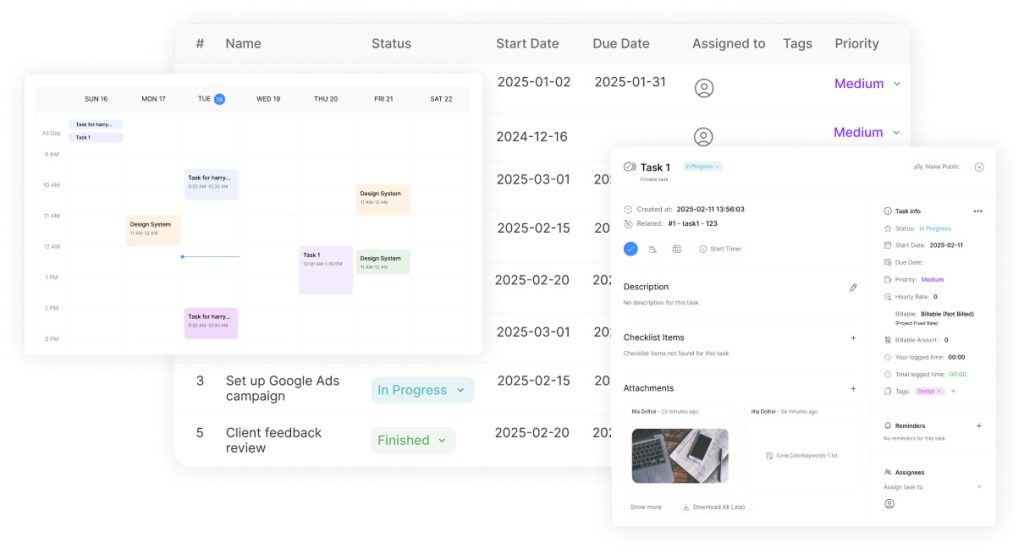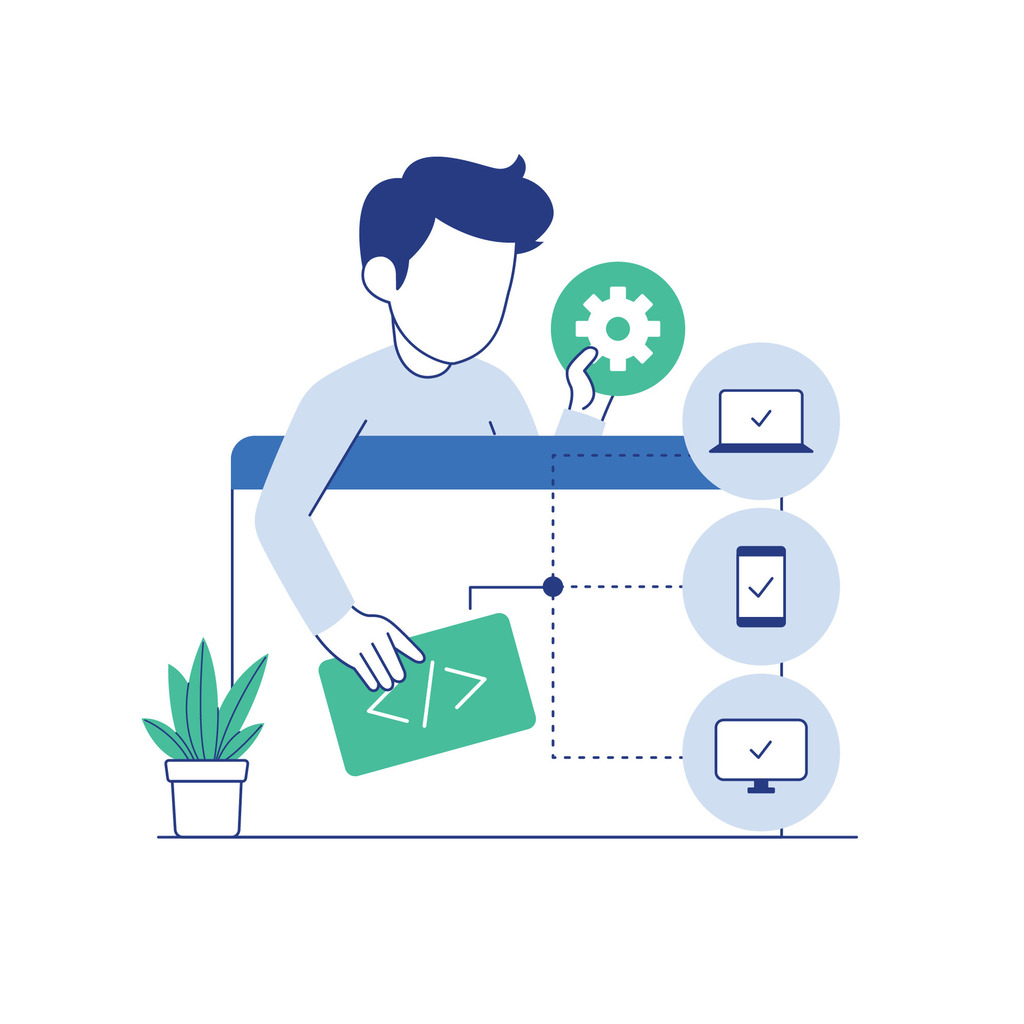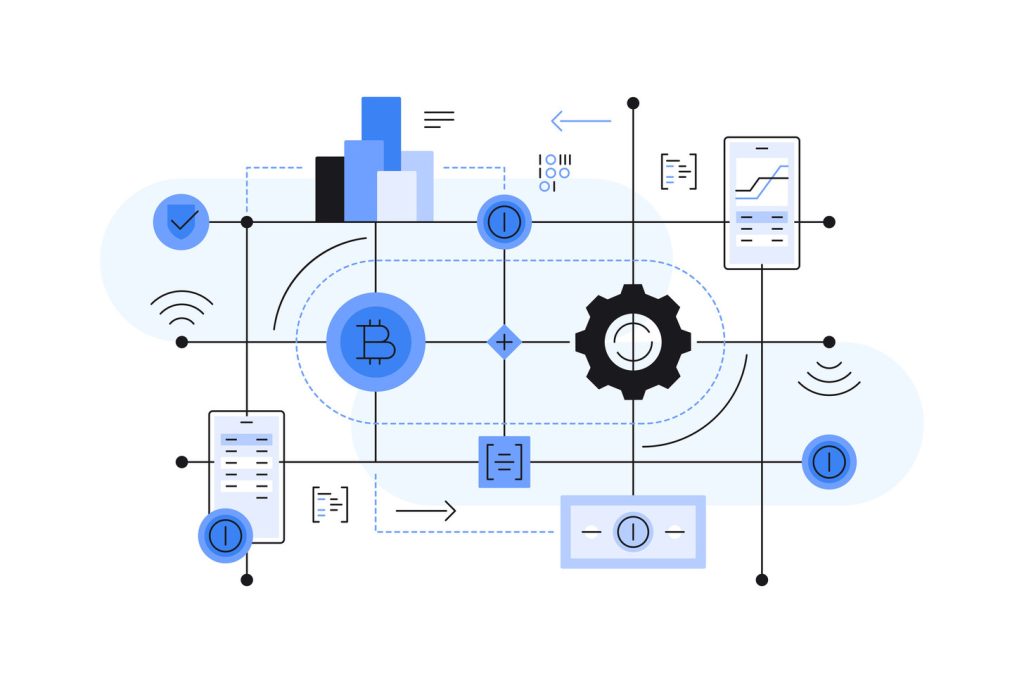AI Documents: Intelligent Document Management

Modern organizations face mounting pressure to produce high-quality materials faster than ever. Traditional methods of creating reports, proposals, and business plans often drain resources through manual formatting and version control issues. Intelligent solutions now eliminate these bottlenecks, enabling teams to focus on strategic priorities rather than administrative tasks.
One platform has already streamlined workflows for thousands of professionals, generating over 1 million files through instant 1-click creation. This tool removes time-consuming steps like template design and formatting adjustments, delivering polished outputs in formats ranging from PDFs to Word documents. Users access full functionality without signups or hidden costs, making it ideal for time-sensitive projects.
The technology adapts to diverse business needs while maintaining strict branding standards. Automated systems ensure consistency across multi-page reports and collaborative workspaces, reducing errors caused by manual updates. Teams maintain full visibility into document versions, with real-time updates accessible to all stakeholders.
Scalability remains a core advantage, as the platform grows alongside organizational demands. Whether drafting brief memos or 15-page strategic plans, professionals achieve enterprise-grade results without specialized training. This approach redefines productivity by turning complex processes into seamless actions.
Key Takeaways
- Generate professional documents instantly with one-click technology
- Access unlimited file creation without registration requirements
- Export materials in multiple formats for flexible use cases
- Maintain brand consistency through automated formatting systems
- Simplify collaboration with real-time version tracking
Introduction to Intelligent Document Management

The shift from manual to automated systems transforms how teams create files. Intelligent platforms now handle repetitive formatting tasks while maintaining corporate branding standards. Professionals generate polished materials in minutes instead of hours—whether drafting contracts or multi-page reports.
These solutions support PDFs, Word files, and collaborative formats like Google Docs. Customization features let users embed charts, adjust layouts, and maintain multilingual content consistency. “What used to take three rounds of edits now happens in one automated process,” notes a project lead at a Fortune 500 company.
Advanced systems integrate data from spreadsheets, CRMs, and cloud storage to reduce manual entry errors. Version histories track changes across teams, ensuring everyone accesses current information. This approach eliminates mismatched fonts or outdated logos that plague traditional methods.
Pattern recognition technology applies industry-specific structures to materials automatically. Platforms learn organizational preferences over time, delivering tailored outputs that align with brand guidelines. The result? Enterprise-grade consistency without micromanaging margins or headers.
By streamlining the creation process, businesses reclaim hours previously lost to administrative work. Teams focus on strategic priorities while intelligent tools handle the technical heavy lifting—a balance that redefines modern productivity.
Features and Capabilities of AI Document Solutions
Businesses now demand tools that adapt to their unique operational needs while maintaining brand integrity. Leading platforms combine robust features with intuitive design, enabling teams to produce materials faster without sacrificing quality.
Customizable Templates and Styles
Brand consistency becomes effortless with dynamic template systems. Users select pre-built layouts or create custom designs with adjustable fonts, color schemes, and structural elements. “Our team maintains uniform branding across 20+ departments through centralized style controls,” shares a marketing director at a tech firm.
Industry-specific templates accelerate document creation for specialized use cases. Legal teams access compliant contract frameworks, while sales departments utilize proposal blueprints. All outputs automatically align with organizational guidelines, eliminating manual formatting checks.
Multi-Format and Multi-Language Support
The platform handles diverse formats seamlessly—from standard PDFs to interactive slide decks. Files export directly to cloud storage platforms like Google Drive, ensuring smooth workflow integration. Global enterprises benefit from built-in translation tools that localize content across 15+ languages.
Real-time previews let users verify layouts before finalizing outputs. This range of capabilities supports everything from internal memos to client-facing reports. Teams maintain version control across all file types, with changes syncing instantly between collaborators.
How AI Documents Streamline Operations
Operational efficiency reaches new heights when repetitive tasks transform into automated sequences. Platforms like Aidocmaker.com demonstrate this shift by generating 10-page reports in 60 seconds—a feat that previously consumed hours of manual work. This leap forward reallocates human effort from technical preparation to strategic decision-making.
Instant Content Creation
Advanced systems handle structure and styling autonomously. Users input core data, and the process unfolds: headers align with brand guidelines, tables self-populate, and layouts adapt to content length. “Our team produces client-ready materials before coffee breaks,” remarks a financial analyst at a Fortune 500 firm.
Collaboration Without Chaos
Multiple stakeholders edit documents simultaneously, with changes syncing in real-time. Version histories track every adjustment, eliminating the confusion of conflicting drafts. Teams meet tight deadlines confidently, knowing revisions won’t derail project timelines.
The platform’s impact multiplies across departments. Marketing groups finalize campaign briefs while sales teams draft proposals—all without competing for design resources. Integration with existing tools ensures this efficiency boost doesn’t disrupt established workflows.
Enhancing Customer Relationships Through Intelligent Document Management

Customer trust hinges on consistent, professional interactions. Intelligent systems ensure every proposal, contract, or report reflects organizational competence through uniform formatting and error-free content. This reliability transforms routine communications into credibility-building moments.
Speed matters in service delivery. Automated tools generate client-ready documents within minutes—not days—when addressing urgent requests. Teams customize materials using pre-approved templates, adding personalized details that show genuine understanding of customer needs. “Clients notice when you anticipate their requirements before they ask,” observes a banking sector operations manager.
Brand consistency strengthens recognition across touchpoints. Marketing collateral, invoices, and project updates all share identical visual elements and messaging tones. This coherence signals professionalism while reducing confusion during complex transactions.
Sales teams accelerate deal cycles by producing tailored proposals during client meetings. Automated systems eliminate bottlenecks caused by manual drafting, allowing businesses to maintain momentum in negotiations. Fewer errors in finalized content prevent misunderstandings that damage partnerships.
Ultimately, precision in communication fosters loyalty. When customers receive polished, relevant materials at every stage, they perceive organizations as reliable partners invested in their success—a competitive edge no business can afford to overlook.
Benefits of Leveraging AI for Document Generation
Productivity gains emerge when organizations replace outdated workflows with modern solutions. Advanced platforms deliver measurable improvements by addressing three critical challenges: time constraints, quality control, and resource allocation.
Time-Saving Automation and Error Reduction
Manual document preparation often consumes hours of skilled labor. Intelligent systems slash creation time by 90%, transforming multi-hour tasks into 60-second processes. Built-in validators catch spelling mistakes and formatting errors before files reach stakeholders.
Aidocmaker.com’s technology demonstrates this efficiency. Its grammar correction capabilities reduce revision cycles by 75%, according to internal metrics. Teams redirect saved hours toward client interactions or strategic planning instead of fixing misplaced commas.
Consistent, High-Quality Output
Brand integrity remains intact across all materials through automated style enforcement. Whether generating contracts or reports, outputs maintain identical fonts, color schemes, and structural precision. “Our partners now expect flawless documents every time—it’s become part of our brand promise,” notes a legal firm administrator.
| Task | Manual Process | Automated Process |
|---|---|---|
| Create 10-page report | 4-6 hours | 55 seconds |
| Error detection rate | 68% | 99.4% |
| Style consistency | Requires manual checks | Automatically enforced |
This reliability produces tangible results: 89% of users report fewer client complaints about document quality. Organizations use these systems to maintain professional standards even when scaling operations rapidly.
Seamless Integration with Cloud Platforms
Cloud storage has become the backbone of modern business operations. Leading solutions now bridge the gap between creation and collaboration by connecting directly to widely used services. This eliminates the need for manual uploads or fragmented workflows.
Google Drive and Microsoft OneDrive Export Options
Platforms like Aidocmaker.com sync with cloud storage tools teams already use. Generated materials save directly to Google Drive or OneDrive accounts with one click. “We eliminated three hours of weekly file management after switching,” reports a project manager at a U.S. tech firm.
Real-time synchronization ensures all stakeholders access updated versions instantly. Edits made in cloud platforms automatically reflect in the source files, maintaining version integrity. Cross-device compatibility preserves formatting whether users open files on desktops or mobile devices.
| Process | Manual Workflow | Automated Integration |
|---|---|---|
| File transfer time | 8-12 minutes | 15 seconds |
| Version errors | 42% occurrence | 0.3% occurrence |
| Compliance checks | Manual review | Auto-encryption |
Secure data handling meets GDPR standards through encrypted transfers and user-controlled permissions. Organizations maintain full ownership of stored documents while benefiting from enterprise-grade security protocols. This dual focus on efficiency and compliance makes cloud integration indispensable for scaling teams.
Diverse Use Cases Across Industries

Industry-specific challenges demand tailored solutions that adapt to unique workflows. Modern platforms now serve sectors from healthcare to construction, transforming how professionals create mission-critical materials. Custom templates and smart formatting ensure outputs meet regulatory standards while saving hours of manual effort.
Precision-Driven Business Communication
Financial teams generate quarterly reports with automated data visualization, turning spreadsheets into board-ready presentations. Sales departments respond to RFPs 83% faster using proposal templates that maintain brand consistency. “We reduced proposal turnaround from three days to six hours,” shares a tech startup operations lead.
Research teams benefit most. Complex analysis becomes shareable through structured layouts that highlight key findings. Academic institutions streamline publishing by converting raw data into journal-ready formats. Cross-referencing tools and citation managers ensure accuracy in every draft.
Organizational Knowledge Management
HR departments maintain compliance with standardized policy documents across global offices. Training teams develop interactive learning materials that adapt to different skill levels. Marketing groups produce campaign retrospectives with performance metrics baked directly into slide decks.
Nonprofits demonstrate impact through donor reports that merge financial data with success stories. Legal firms automate contract creation while preserving precise language requirements. Every sector gains tools to communicate complex information with clarity and professionalism.
Utilizing AI Documents for Enhanced Business Efficiency
Writer’s block stalls productivity across industries, leaving professionals staring at blank screens. Modern solutions tackle this challenge by transforming fragmented thoughts into structured outputs. Platforms like Aidocmaker.com demonstrate how intelligent frameworks guide users from concept to polished materials without creative friction.
Breaking Through Creative Barriers
Structured templates provide guardrails for content development. Users input core ideas, and the system organizes them into logical sections with suggested headings. “The tool helped our team turn rough notes into board-ready reports in half the usual time,” shares a consulting firm manager.
Real-time analysis identifies gaps in text flow, prompting users to expand critical points. Automated suggestions maintain consistent terminology across lengthy documents, reducing cognitive strain during drafting. Teams focus on strategic insights rather than formatting minutiae.
Adaptive systems learn organizational preferences through repeated use. Frequently used phrases and branding elements auto-populate in new files. This personalized approach minimizes repetitive typing while ensuring alignment with company standards.
- Turn brainstorm notes into outlines within seconds
- Receive contextual suggestions for expanding key topics
- Maintain voice consistency across teams and departments
Efficiency gains multiply as teams trust the system’s ability to handle structural heavy lifting. Complex proposals and reports take shape faster, with professionals directing energy toward high-impact business objectives rather than administrative tasks.
Customizable Workflows and Document Control

Effective management systems empower teams to shape their document creation process around organizational needs. Customizable workflows mirror approval hierarchies and compliance protocols, ensuring materials meet quality benchmarks before distribution. Administrators set rules for editing access, review stages, and final sign-offs—eliminating bottlenecks in multi-department projects.
Robust control features maintain oversight without micromanagement. Version histories track every change, while audit trails simplify compliance reporting. Teams restore previous drafts with one click when revisions miss the mark. “We caught three critical errors during automated checks that manual reviews overlooked,” shares a pharmaceutical compliance officer.
Permission settings protect sensitive data while enabling collaboration. Marketing leads might edit campaign briefs, while legal teams lock finalized contracts. Automated alerts notify stakeholders about pending approvals, keeping projects on schedule.
Adaptive systems evolve with business growth. Startups use basic review chains, while enterprises implement multi-tiered validations. When regulations change, workflows update to reflect new requirements—no coding needed. This flexibility future-proofs operations as organizations scale.
By combining structured document governance with adaptable frameworks, companies balance efficiency and precision. The result? Consistent outputs that align with strategic goals at every growth phase.
Overview of AI Powered Document Tools
Modern platforms now combine multiple content creation methods into single workflows. These systems handle written, visual, and auditory elements simultaneously, eliminating the need for disjointed applications. Professionals craft polished materials faster by managing all components through one interface.
Text, Voice, and Image Generation Capabilities
Advanced tools produce coherent text that matches organizational voice guidelines. Built-in validators ensure consistent terminology across contracts, reports, and marketing copy. “Our technical manuals now read like they were written by one expert—not twelve different engineers,” notes a manufacturing team lead.
Voice generation transforms written text into natural-sounding audio files for training materials or client presentations. Image builders create charts and infographics that align with brand color schemes. This multi-format approach ensures all content types support core messaging.
Seamless Editing and Preview Features
Real-time modification features let teams adjust layouts while preserving formatting integrity. Users drag-and-drop elements in the preview pane, seeing instant visual feedback. Last-minute changes no longer risk breaking document structures.
Preview capabilities display how text flows across pages before final export. Teams spot awkward page breaks or misaligned tables early, reducing post-production fixes. Integrated spell-checkers and style guides maintain quality standards throughout editing phases.
Integration of AI Document Technology in Research
Research teams face escalating demands to distill complex data into actionable insights swiftly. Intelligent platforms now address this challenge by automating time-intensive tasks like literature reviews and cross-referencing. These systems analyze vast datasets while maintaining compliance with academic standards.
Rapid Document Summaries and Analysis
Advanced tools generate concise overviews of lengthy studies in seconds. Users input raw data or source materials, and the process begins: key findings surface automatically, methodologies get highlighted, and conclusions receive contextual framing. “We review 300% more studies monthly without sacrificing depth,” shares a pharmaceutical research director.
Pattern recognition identifies trends across multiple sources, flagging critical connections human reviewers might miss. Teams maintain full control over output depth—from bullet-point abstracts to detailed executive briefs. Real-time collaboration features let global experts annotate findings simultaneously.
These innovations free researchers to focus on breakthrough discoveries rather than administrative tasks. Secure cloud integration ensures sensitive data remains protected during analysis. As technology evolves, it continues redefining what’s possible in knowledge discovery and dissemination.

